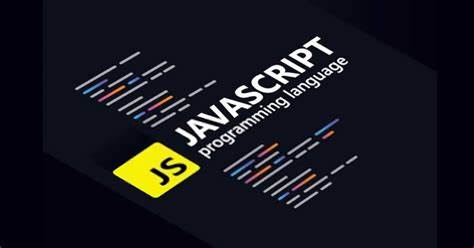As industries across the globe continue to embrace digital transformation, the need for advanced and user-friendly visualization tools in industrial automation is more critical than ever. One technology that stands out in this arena is JavaScript. This versatile scripting language is poised to play a pivotal role in revolutionizing industrial automation visualization. Here’s why.
Web-Based Interfaces: The Future of Industrial Control
JavaScript is the backbone of web applications, making it possible to create cross-platform, web-based interfaces that can be accessed from any device with a browser. This capability is invaluable for industrial automation systems, which often require remote monitoring and control.
Integration with IoT: Bridging the Digital Divide
With the rise of the Internet of Things (IoT), JavaScript, particularly Node.js, is crucial for collecting, processing, and visualizing data from a myriad of IoT devices. This integration is essential for modern industrial automation systems, which rely on IoT for real-time data acquisition and processing.
JavaScript excels in facilitating real-time communication through WebSockets and APIs. This seamless data exchange between industrial devices and visualization dashboards ensures that the right information is available at the right time, enhancing operational efficiency.
Enhancing User Experience (UX) in Industrial Settings
Frameworks like React, Angular, and Vue.js enable the creation of highly interactive and user-friendly dashboards. These tools transform complex data into intuitive visual representations, making it easier for operators to understand and interact with the system.
The flexibility of JavaScript allows for high levels of customization, ensuring that interfaces can be tailored to meet specific industrial needs and user preferences. This adaptability is key to developing solutions that fit diverse operational requirements.
Interoperability and Integration: A Unified Approach
JavaScript can integrate various systems and technologies, providing a unified interface for different aspects of industrial automation. This integration spans from production management to maintenance scheduling, ensuring a cohesive and efficient workflow.
Many existing industrial systems can be interfaced with modern web technologies, thanks to JavaScript. This compatibility allows for gradual upgrades and seamless integration with state-of-the-art visualization tools, protecting investments in legacy systems while embracing new technologies.
The Power of Community and Ecosystem
The vast and active JavaScript community provides extensive resources, libraries, and frameworks that can be leveraged for industrial automation visualization. This community-driven innovation ensures continuous improvement and support for emerging industrial needs.
JavaScript and its ecosystem are rapidly evolving, with new tools and libraries continually being developed. This ensures that industrial automation visualization solutions remain cutting-edge, meeting the ever-growing demands of the industry.
Real-World Applications: JavaScript in Action
1. SCADA Systems: JavaScript is used to build web-based SCADA (Supervisory Control and Data Acquisition) systems, offering real-time data monitoring and control that is accessible from anywhere.
2. Predictive Maintenance: Visualization tools built with JavaScript can display predictive maintenance data, helping foresee equipment failures and reducing downtime.
3. Production Dashboards: Real-time production data can be visualized using JavaScript to monitor key performance indicators (KPIs) and optimize manufacturing processes.
4. Energy Management:** JavaScript-powered dashboards can visualize energy consumption data, enabling better energy management and cost savings.
JavaScript is not just a language for web developers; it is becoming an indispensable tool in the field of industrial automation visualization. Its ability to create interactive, real-time, web-based interfaces, coupled with robust integration capabilities and a supportive community, makes it the go-to technology for industrial visualization solutions. As industries continue to evolve, JavaScript’s role in enhancing operational efficiency and user experience will only become more pronounced. The future of industrial automation visualization is here, and it is powered by JavaScript.


